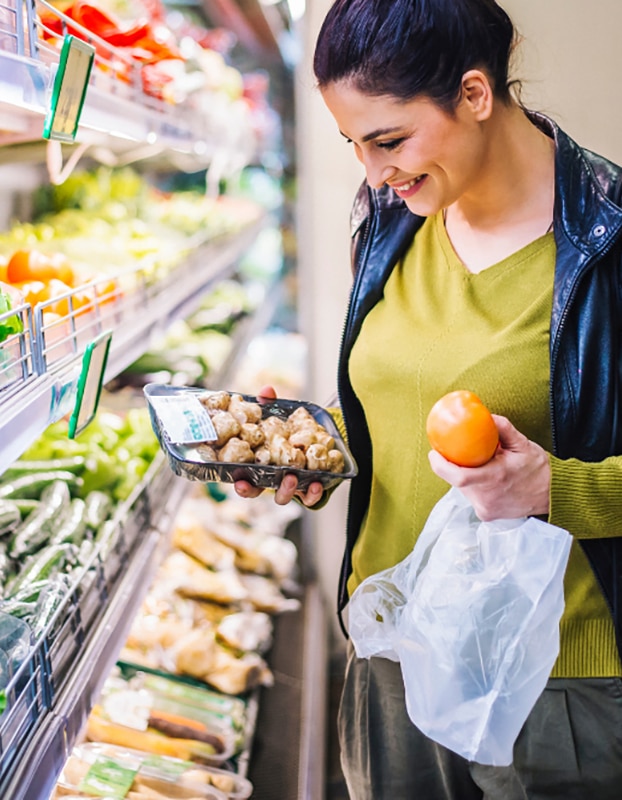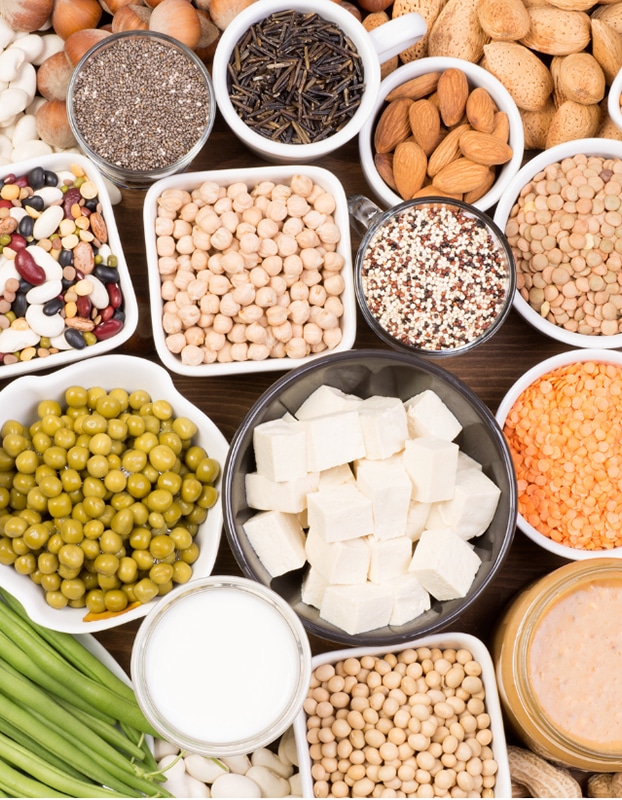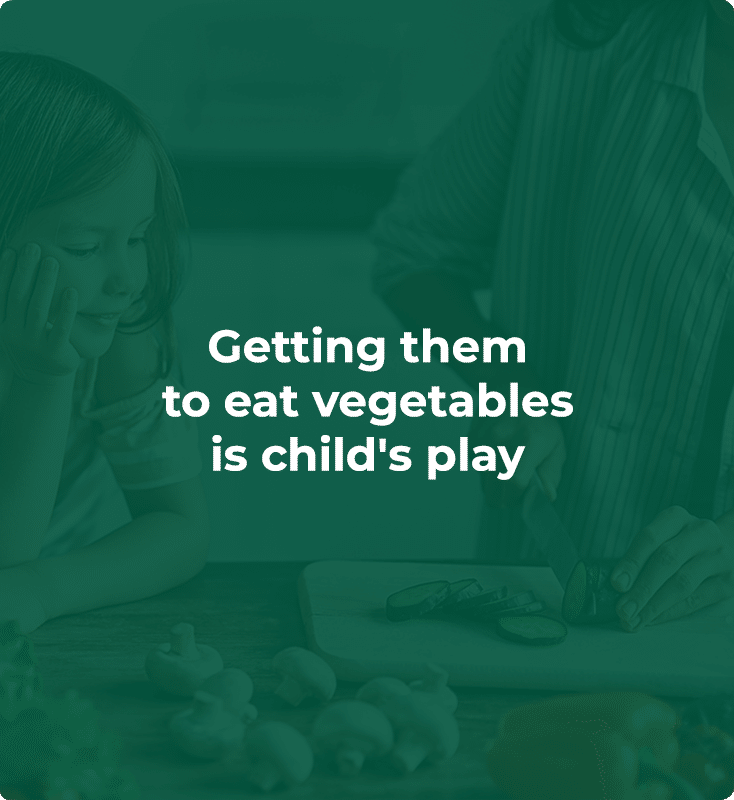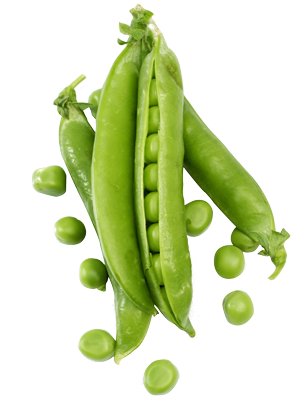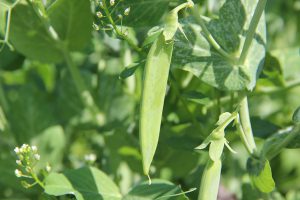Recipes we love
See all recipes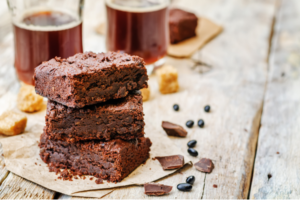
Green beans and small peas gaspacho
A cocktail of vitamins and fibers for a very fresh recipe which can be served with whole wheat bread...
Multi-coloured pasta with sweet corn and peas
Serving foods they love alongside others they are less familiar with is the best way of getting chil...
Tagliatelles with goat cheese and garden peas
A recipe that will delight the taste buds of young and old alike. A dish full of vitamins, mainly fo...
Health
benefits
A good way to get lazy bowels moving
Peas are rich in fiber, which helps with regular bowel movement, and is good for. gut microbiota, which are all the bacteria present in your intestines. These thousands of billions of bacteria are involved in different processes in the body and have been proven to be vital to health.
.
Peas are also:
- a source of vitamin B9 or folic acid (for cellular renewal, particularly important for pregnant women for fetal development, for growing children, and for convalescents).
- a source of vitamin B1 (heart function, energy, nervous system)
- a source of phosphorus (for energy, bone and teeth health, and cellular membrane health)
They also contain :
- vitamin C (multifunctional vitamin: nervous system, skin, energy metabolism, immunity, etc.)
- potassium (nervous system, blood pressure, muscular function)
- manganese (energy metabolism, healthy bones, antioxidant)
- iron (cognitive function, oxygen transport, energy metabolism, immune system)
- antioxidants (lutein and zeaxanthin)
- proteins (more than most other vegetables)
Why should you consume plant-based proteins? Because they meet all the planet’s dietary and environmental challenges! Find out more in the ARTICLE: “Plant-Based Proteins to Feed the World”.
Nutritional
composition
When is the right
time to eat them
Spring and summer.
Peas are available from April to July, but their high season runs over two months: May and June.
Vegetable patch or
urban balcony??
Peas are herbaceous annuals that grow well in rich, light and fairly humid soil, in full sun or half-shade.
To learn everything you need to know about growing peas, read the page on growing tips.
Choosing and
storing peas
Choose your peas well :
- Fresh: the pod must be shiny, bright green, puffed and firm, with no yellow spots. The seed must be crunchy and slightly sweet.
- Frozen or canned: take note of the use-by date on the packaging.
How to store your peas :
- In the refrigerator: Two to three days at most in the vegetable drawer.
- In the freezer: several months after blanching, if you bought them fresh.
Anti-waste tips
Conserving vegetables is one of the tricks for reducing food waste. We offer you 9 tips for fighting food waste! You will see that it is easy to implement these tips in your everyday life.
Do you have some peas left over?
- Put them into a quiche.
- Make them into a puree and mix into mashed potato.
- Mix with a little lemon and serve as pea tapenade on toast with some crudités or a slice or hard-boiled egg.
If you have a big harvest, blanch the peas and then freeze them, so you always have some brightly colored veg within reach. And there’s no waste, as when you freeze the peas you divide them into portions that you are going to use.
What is the environmental impact?
The Product Environmental Footprint (PEF), a score established by Agribalyse*, tells us more! It takes account of all the phases in a vegetable’s life cycle: how it’s grown, the impact of its transport, the impact of its processing, and so on. The lower the score, the lower the environmental impact.
- Peas, raw: 0.09
- Peas, cooked: 0,16
- Steak, raw: 2.77
*Data taken from the Agribalyse database, which gives the environmental score of foodstuffs. This unique score is the average of 16 indicators, calculated using the European methodology PEF. It is not the same as an environmental label or “eco-score”..
CO2 equivalent: for 100g of raw peas: 0.039 kg of CO2 eq, which is the same as 1.1 g of raw steak or driving 160 m by car
Tips and
tricks
How to prepare peas
Peas must be shelled. Easy as pie, but time-consuming! That’s why we usually get them frozen or canned.
Cooking time:
- 1 minute: to blanch them, if they’re fresh.
- 10 minutes: in a pressure cooker.
- 5 minutes: in the microwave, if they’re frozen.
- 15 minutes: in boiling water, sautéed or in a wok.
- 0 minute! ready to eat from a can (slightly warmed up though!)
Peas go well with…
Raw: Utterly fresh, peas are delicious to crunch with a dash of oil and salt. Or in succulent spring salads with radishes, cucumbers and fresh goat cheese.
Cooked: Peas go particularly well with almost any type of culinary combination. They make a delicious soup with cream, go marvelously well with mash potato, are a tasty accompaniment for pasta, pork, smoked or grilled meats, rice, pigeon, poultry or fish. And of course, form a perfect pair with carrots! form a perfect pair with carrots!
A tip for keeping your peas bright green. Plunge peas into a bowl of ice water just after cooking them to fix the chlorophyll.
Don’t have a minute to lose? Then peas are perfect for you: they can be cooked in the blink of an eye, and are nutritious and delicious. Discover the pea and corn combo!
Can everyone
eat it?
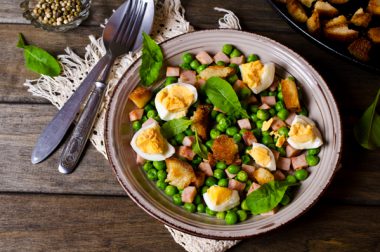
Young children
Peas are a favorite with babies from the age of 6 months, alone or with carrots. They enjoy them in a puree, as a soup, and later on with a spoon.
And everyone else
A classic accompaniment that’s always a sure bet!
See plenty of other tips for encouraging children to eat vegetables
Where do they come from?
Origins and varieties
Origins
Most of the world’s peas come from China and India. France (where they’re very popular) is the biggest producer in Europe, followed by Spain and the United Kingdom.
Varieties
There are two main categories of shelled peas:
- round peas
- wrinkled peas (less sought-after)



 Eggplant
Eggplant  Chard
Chard  Choosing a Plot for Your Garden
Choosing a Plot for Your Garden 


